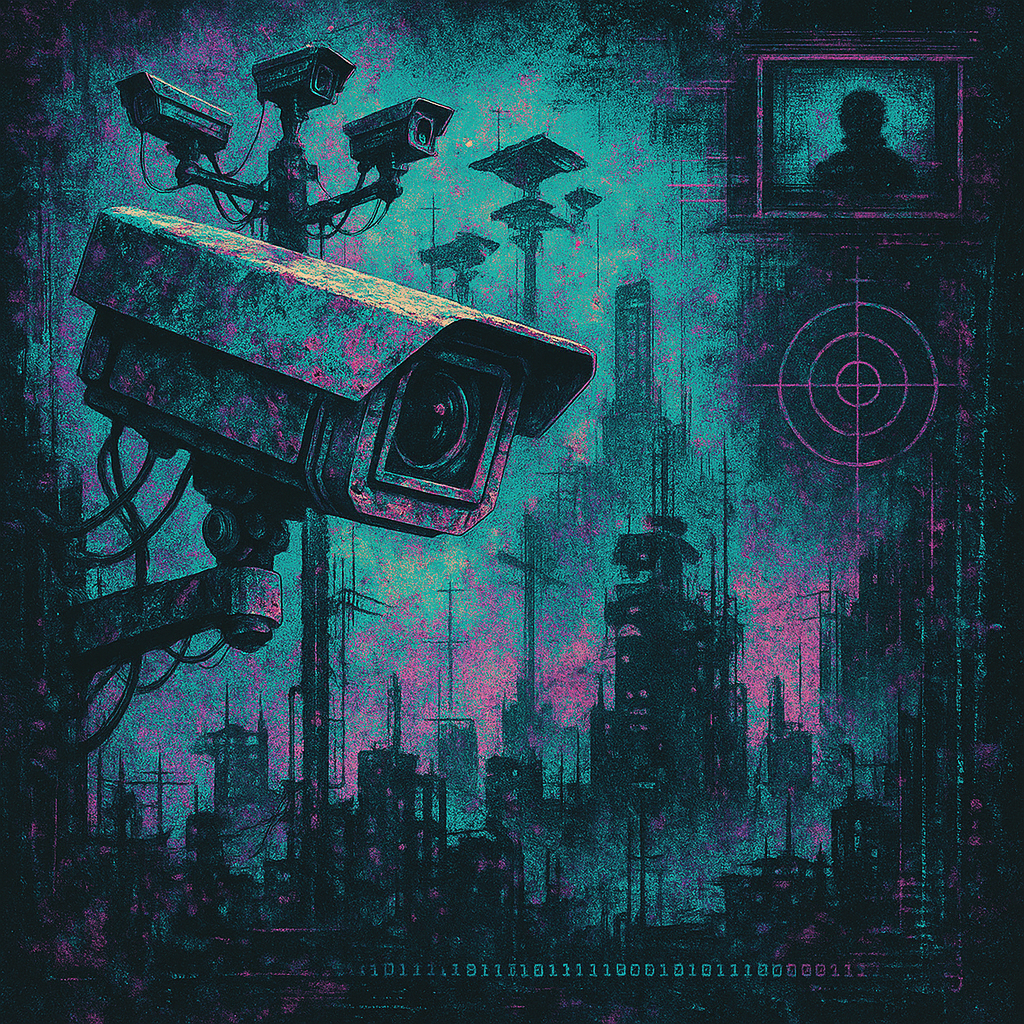
Your Face Is Worth $3.50: The Hidden Economics of Surveillance Capitalism
Share
They're Watching. Here's How We Fight Back.
Your Face Is Worth $3.50 to Them
Every time you walk past a camera, your biometric data gets harvested, processed, and sold. Clearview AI has scraped over 30 billion photos from social media and public sources, building the world's largest facial recognition database. Amazon's Ring doorbell network has created a private surveillance grid spanning millions of homes across suburban America, with footage accessible to over 2,000 law enforcement agencies without warrants.
Your local grocery store's facial recognition system doesn't just know you—it knows your shopping patterns, your mood indicators, your demographic profile, and your spending habits better than your closest friends. Walmart's facial recognition can identify "suspicious behavior" before you even realize you're being watched. Target's system can predict pregnancy before family members know.
The average American is captured on camera 238 times per day across retail stores, traffic intersections, public transportation, office buildings, and residential areas. Each capture generates revenue streams through data sales, targeted advertising, insurance risk assessments, and predictive analytics. Your anonymity has been commoditized, packaged, and sold to the highest bidder—and you're not seeing a penny.
Major retailers like Home Depot, Macy's, and Best Buy use facial recognition for "loss prevention," but the real loss is your privacy. These systems create detailed profiles linking your face to purchase history, return patterns, and even emotional responses to products. This data gets sold to marketing companies, shared with law enforcement, and integrated into credit scoring algorithms.
This isn't a dystopian future. This is Tuesday afternoon at your local shopping center.
The Technical Reality They Don't Want You to Know
Object detection systems—the technological backbone of modern surveillance infrastructure—have a critical vulnerability that Silicon Valley desperately wants to keep secret. These systems can be confused, disrupted, and completely defeated by specific visual patterns that exploit fundamental flaws in how machine learning algorithms process and interpret visual data.
Our adversarial patterns aren't fashion statements or aesthetic choices. They're weapons-grade anti-surveillance technology, developed through rigorous machine learning simulations and tested against the exact computer vision models deployed by:
- Ring doorbell networks (using Amazon's Rekognition API)
- Retail facial recognition systems (Sensormatic, FaceFirst, Veridium)
- Traffic monitoring cameras (Rekor, Genetec, Milestone)
- Corporate security systems (Avigilon, Axis, Hikvision)
- Smart city surveillance (IBM, Microsoft, Palantir)
- Social media auto-tagging (Facebook, Instagram, TikTok)
When you wear adversarial apparel, you're not hiding from cameras—you're actively breaking the algorithms that power them. You're introducing chaos into their ordered world of data collection and behavioral prediction.
For the Technically Minded: How This Actually Works
Standard object detection relies on convolutional neural networks (CNNs) trained on millions of labeled images using frameworks like TensorFlow, PyTorch, and OpenCV. These systems analyze pixel patterns, edge detection, and feature mapping to identify objects, faces, and behavioral patterns with 95%+ accuracy under normal conditions.
Adversarial patterns introduce carefully calculated visual noise—mathematically precise perturbations that cause these algorithms to misclassify what they're seeing. We're not talking about random static or simple geometric patterns. These are sophisticated visual attacks designed using gradient-based optimization techniques, targeting specific layers of neural network architectures.
The Technical Process:
- Model Analysis: We reverse-engineer the CNN architectures used by major surveillance systems
- Gradient Calculation: We compute gradients that maximize classification errors
- Pattern Generation: We create visual patterns that exploit these vulnerabilities
- Real-World Testing: We validate effectiveness against actual surveillance hardware
Think of it as visual malware that's completely invisible to human perception but causes machine vision systems to hallucinate. The same evolutionary principle that gives zebras their stripes to confuse predators—except we engineered ours specifically to target the surveillance systems watching you right now.
The result? Facial recognition systems might classify you as a stop sign. Object detection algorithms might not detect you at all. Behavioral analysis systems might interpret your movements as random environmental noise.
This Is War, Not Fashion
Every major tech company is racing to build the most comprehensive facial recognition database in human history. Google's FaceNet can identify faces with 99.63% accuracy. Facebook's DeepFace system recognizes faces as well as humans do. Apple's Face ID has normalized biometric surveillance as a convenience feature.
Every retailer is implementing "loss prevention" systems that track your movements, analyze your behavior, and build psychological profiles. Kroger's EDGE system tracks eye movements to optimize product placement. 7-Eleven's facial recognition can identify "persons of interest" across thousands of locations. CVS's system links your face to prescription data and health information.
Every city is deploying "smart" cameras that monitor public spaces, analyze crowd behavior, and predict criminal activity. New York's Domain Awareness System processes feeds from 18,000+ cameras. San Francisco's surveillance network can track individuals across the entire city. Chicago's Array of Things monitors everything from air quality to pedestrian patterns.
They're not asking for consent. They're not providing opt-outs. They're extracting your biometric data and monetizing it through surveillance capitalism.
The surveillance state isn't being built by governments—it's being built by corporations who then sell access to governments. Your face is their product. Your movements are their data points. Your privacy is their profit margin.
Your choice is binary: Fight back or become a product.
The Hacker's Wardrobe: More Than Clothing, It's Digital Armor
You understand technology because you work with it, live with it, and recognize its power. You value privacy because you understand what happens when it's lost. You know that in a world of total surveillance, anonymity isn't paranoia—it's digital self-defense.
This isn't about hiding from law enforcement or avoiding legitimate security measures. This is about preserving the psychological space where you can exist without performing for an invisible audience of algorithms, data brokers, and corporate surveillance systems.
Every adversarial pattern is a declaration of digital independence.
Our Cyber City Hoodie ($74.99) features urban camouflage patterns specifically designed to disrupt facial recognition in metropolitan environments. The Deception Mosaic design confuses object detection algorithms used in retail surveillance. The Dot Matrix Hoodie ($59.99) creates visual interference that breaks automated tracking systems.
These aren't just hoodies—they're functional techwear engineered for the surveillance age. Each pattern represents hundreds of hours of machine learning research, algorithm analysis, and real-world testing against actual surveillance hardware.
The Privacy Economics You Need to Understand
Your biometric data generates approximately $3.50 per person per year in direct revenue. But the indirect value—through targeted advertising, behavioral prediction, and risk assessment—multiplies that figure by 10x to 50x.
Data brokers like Acxiom, Epsilon, and LexisNexis maintain profiles on over 700 million consumers, including facial recognition data, location patterns, and behavioral analytics. These profiles sell for $0.50 to $2.00 each, but get resold dozens of times.
Insurance companies use facial recognition data to assess risk factors, adjust premiums, and deny coverage based on perceived lifestyle indicators extracted from surveillance footage.
Employers increasingly use facial recognition for hiring decisions, workplace monitoring, and performance evaluation. Your face becomes your permanent employee ID, tracked across every interaction.
When you wear adversarial apparel, you're not just protecting your privacy—you're protecting your economic future.
Join the Resistance or Fund the Machine
You're going to buy clothes anyway. The fundamental question is whether those clothes protect your digital rights or surrender them to surveillance capitalism.
Regular apparel makes you trackable, identifiable, and profitable to data brokers. Every time you wear conventional clothing in public, you're essentially donating your biometric data to corporate surveillance systems.
Adversarial apparel makes you invisible to the algorithms that commodify your existence.
This is bigger than fashion. This is about technological resistance. This is about maintaining human agency in an age of algorithmic control. This is about refusing to accept surveillance as the price of participation in modern society.
Your anonymity is under systematic attack by billion-dollar surveillance infrastructure.
Your response defines whether you remain human or become data.
The Choice Is Binary
Every day you delay is another day your biometric data gets harvested, processed, and sold. Every public space you enter without protection is another opportunity for surveillance systems to build more comprehensive profiles.
The surveillance machine is already operational. The question is whether you'll feed it or fight it.
Browse our 4th Amendment Collection and choose your digital armor. Because in the war between human privacy and machine surveillance, neutrality is surrender.
Your face. Your choice. Your resistance.
